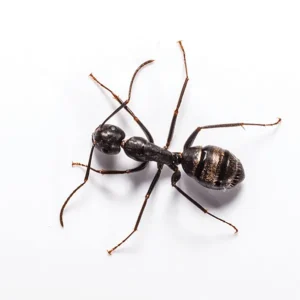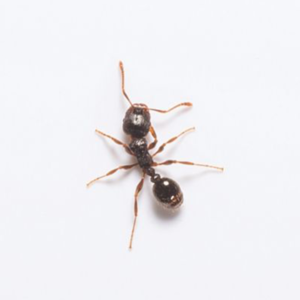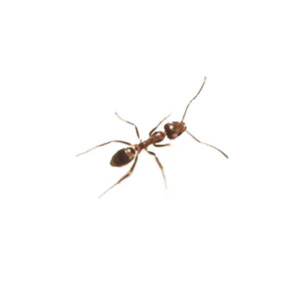Acrobat Ant Identification
What Do Acrobat Ants Look Like?
In North Carolina, acrobat ants are one of many common ant species found in the area and are occasional structural pests. Their name is derived from the acrobatic pose of the workers when they are alarmed, with the abdomen raised and arched above the head. Their stinger is shaped like a spatula, which they use to wipe their venom on smaller prey. Acrobat ants are relatively small and measure 2.5 to 4 millimeters. Their color ranges from light brown to black. One distinctive feature is their heart-shaped abdomen when viewed from above, with the thorax and head forming an uneven, distinct separation. Identifying characteristics include six legs, antennae, and, in swarmers, wings. Additionally, they possess a pair of spines on their thorax, resembling the points of an arrowhead.
Signs of an Acrobat Ant Infestation
Key signs of an acrobat ant infestation, include the presence of visible ants with abdomens held high, damaged insulation, and nests in damp wood or foam insulation panels. Look for signs of structural damage, especially in areas prone to moisture accumulation. You may also see tiny sawdust piles near potential nesting sites.
Habitat, Diet, Life Cycle & Bites
Where Do Acrobat Ants Live?
Outdoors, acrobat ants nest in a variety of locations, usually in the deadwood of trees, including branches, stems of trees, and stumps. They are not considered pests of trees and shrubs but they do protect aphids and other insects that are pests. Indoors, acrobat ants nest in woodwork, sometimes moving into abandoned carpenter ant and termite galleries. When found nesting in a home, they prefer doors and window frames that have been damaged by other insects or moisture. When foraging for food, these ant pests prefer kitchen cabinets and pantries. Their presence, whether indoors or outdoors, indicates decaying wood.
Diet of Acrobat Ants
The ants practise mutualism, which means they tend aphids and feed on the honeydew that the aphids produce. In addition, they scavenge for proteins and seeds and feed on other insects, playing a role in the ecosystem.
Life Cycle of Acrobat Ants
Identifying the life cycle of ant species is crucial for effective ant extermination. Acrobat ants go through complete metamorphosis stages, from eggs to larvae, pupae, and adults, with the queens laying eggs in protected spaces.The duration of each stage varies depending on environmental conditions such as temperature and food availability.
Acrobat Ant Bites
Worker acrobat ants have been known to bite aggressively and release a foul odor when provoked. Mild reactions are common and may last from a few hours to a few days. While not severe, bite treatment may be required for comfort in some cases.
Are Acrobat Ants Dangerous?
Acrobat ants are not typically dangerous to humans directly.They don’t usually nest in homes, but if conditions are right and there is damp or damaged wood in the home, they may take advantage of the opportunity. A disturbing habit is their infestation of foam core panel insulation. Acrobat ants also strip the insulation off of wires, causing short circuits that create a fire hazard. If an acrobat ant infestation is suspected, it is recommended to contact a professional ant exterminator.
How to Get Rid of Acrobat Ants?
Effective ant removal involves identifying nesting sites, eliminating damp and damaged wood and sealing entry points.
Acrobat Ant Prevention Tips
Preventative measures include moisture control, regular property inspections, and maintaining tree and shrub health to reduce potential nesting spots close to your property. For extensive issues, consider professional spraying for ants.
Need help with Acrobat Ants control?
FAQs
Are Acrobat Ants Harmful to Properties?
Whilst not harmful to humans, acrobat ants can be a significant concern in North Carolina homes and properties due to their destructive habits.
Are Acrobat Ants Hard to Get Rid Of?
Acrobat ants can be hard to get rid of due to their ability to form multiple colonies, varied nesting habits, adaptability and protective behavior. Their ability to quickly relocate and switch food sources makes elimination difficult.While smaller infestations might be managed through DIY methods, larger or recurring issues often require professional intervention for effective and long-term control – that’s where Bug Out can help!





